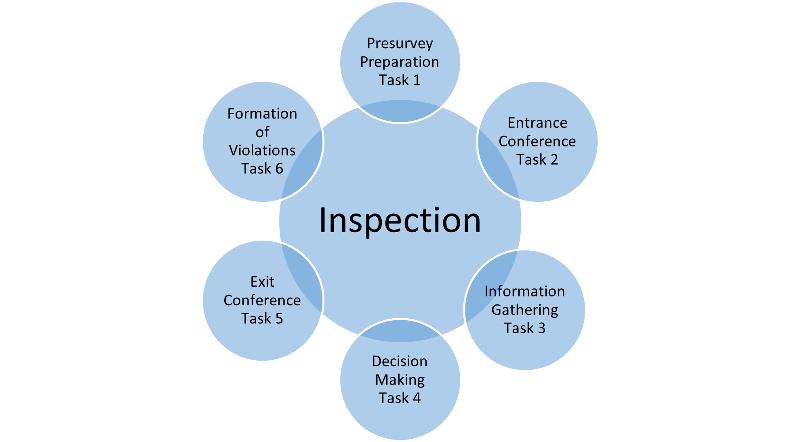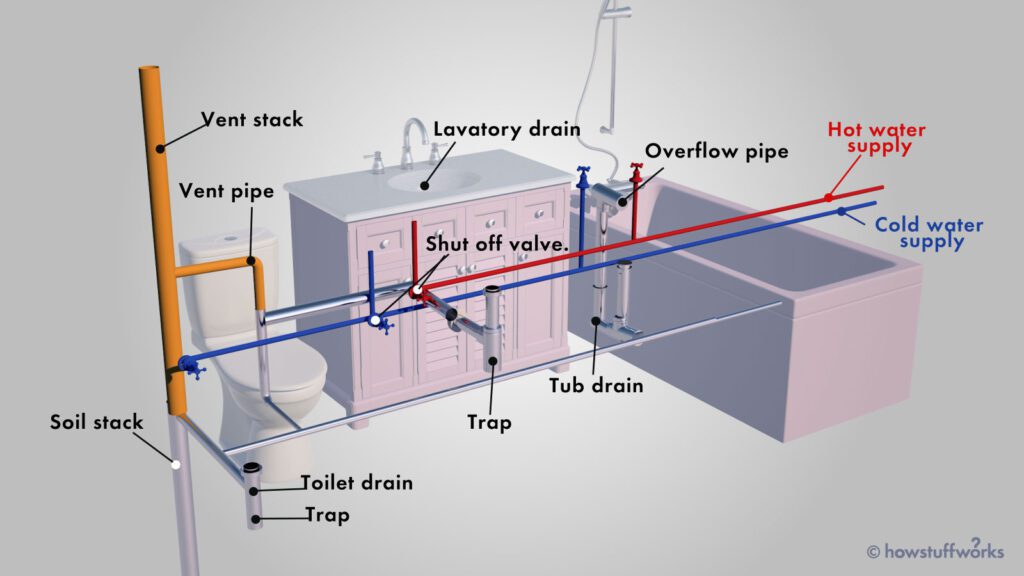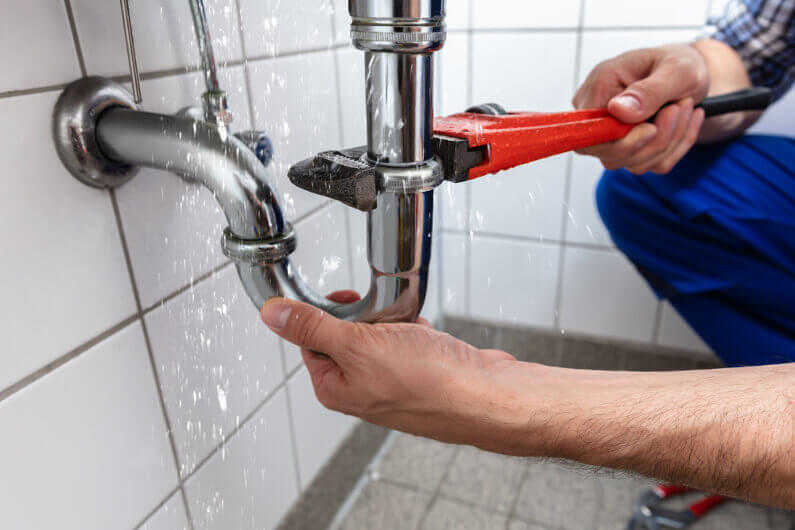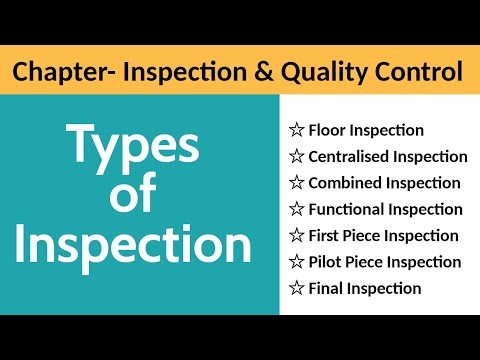If you’ve ever wondered about the process behind inspections, look no further. This brief article will give you a concise overview of what the inspection process entails. Whether you’re buying a new home, getting your car serviced, or undergoing an annual health check-up, inspections are a vital step in ensuring safety, quality, and adherence to regulations. Let’s explore the fundamental elements of the inspection process and understand its significance in various areas of our lives.
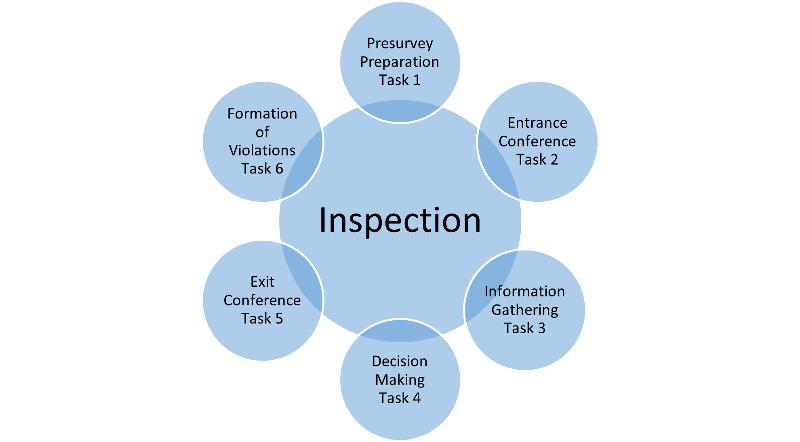

Overview of the Inspection Process
Definition of Inspection
Inspection is the systematic process of evaluating, examining, and assessing something to ensure it meets the required standards, regulations, or criteria. It involves a thorough examination of various components, structures, or systems to determine their functionality, safety, quality, or compliance. Inspection can be conducted in various fields such as real estate, manufacturing, construction, and maintenance, to name a few. It plays a crucial role in identifying potential issues, preventing risks, and maintaining overall quality and safety.
Importance of Inspection
Inspection holds significant importance in a wide range of industries and sectors. It serves as a critical tool for quality control, risk management, and compliance assurance. By conducting inspections, organizations can identify defects, hazards, or non-compliance issues at an early stage, allowing for timely corrective actions. It helps to ensure the safety, reliability, and functionality of products, buildings, equipment, and various other assets. Additionally, inspections provide assurance to stakeholders, clients, and consumers that the necessary standards and regulations are being adhered to.
Benefits of a Proper Inspection Process
A well-implemented inspection process offers numerous benefits to individuals, organizations, and communities. Firstly, it helps to detect and address potential risks, faults, or failures, thereby enhancing safety and reducing the likelihood of accidents or incidents. Secondly, inspections act as a preventive measure, preventing minor issues from escalating into major ones, thus saving time, money, and resources in the long run. Moreover, inspections contribute to quality control efforts and ensure that products or services meet the desired standards or specifications. They also aid in regulatory compliance and help organizations maintain a positive reputation. Ultimately, a comprehensive inspection process leads to improved efficiency, productivity, and customer satisfaction.
Types of Inspections
Pre-purchase Property Inspection
A pre-purchase property inspection is a crucial step for individuals looking to buy a house or commercial property. This type of inspection involves a comprehensive examination of the property’s structural integrity, safety features, and overall condition. It helps potential buyers make an informed decision by identifying any existing or potential issues such as faulty plumbing, electrical problems, or hidden structural damage. A pre-purchase property inspection provides valuable insights into the property’s true value and helps avoid unexpected costs or hazards in the future.
Safety Inspection
Safety inspections are conducted to assess and ensure the safety standards and compliance of various environments, including workplaces, public spaces, and residential areas. These inspections focus on identifying potential hazards, risks, or violations of safety regulations. They cover aspects such as fire safety, electrical systems, building codes, and ergonomic considerations. By identifying and addressing safety concerns, these inspections play a crucial role in preventing accidents, injuries, or legal liabilities.
Quality Control Inspection
Quality control inspections are carried out to assess the quality, consistency, and adherence to standards of products, materials, or processes. They involve a detailed examination of the specifications, workmanship, and performance of the items being inspected. Quality control inspections ensure that the final product meets the desired standards, functions correctly, and meets customer expectations. These inspections contribute to overall customer satisfaction and help organizations maintain a competitive edge in the market.
Routine Maintenance Inspection
Routine maintenance inspections are conducted regularly to assess the condition and functionality of equipment, systems, or facilities. These inspections aim to identify any signs of wear and tear, damage, or potential issues that may require maintenance or repair. By conducting routine maintenance inspections, organizations can detect problems at an early stage, prevent breakdowns or malfunctions, and prolong the lifespan of their assets. Ultimately, these inspections contribute to cost savings, operational efficiency, and the overall longevity of equipment and facilities.


Steps Involved in an Inspection Process
A comprehensive inspection process typically involves the following steps:
Identifying the Inspection Purpose
Before conducting an inspection, it is essential to clearly define the purpose and objectives of the inspection. This step involves determining what needs to be inspected, the specific requirements or standards to be followed, and the desired outcomes of the inspection.
Setting Objectives and Criteria
Once the purpose is identified, it is crucial to establish clear objectives and criteria for the inspection. This step involves defining the specific goals and targets to be achieved during the inspection process. Clear criteria help to ensure consistency and accountability in evaluating the inspection results.
Gathering the Necessary Tools and Equipment
To conduct a successful inspection, it is important to gather and prepare the necessary tools, equipment, and resources. This may include items such as measuring instruments, testing devices, safety gear, or specialized equipment depending on the nature of the inspection.
Preparing the Inspection Checklist
An inspection checklist is a valuable tool that helps to ensure all relevant areas, components, or factors are properly evaluated during the inspection process. The checklist should be comprehensive, covering all the essential elements that need to be inspected, and should be customized to suit the specific requirements of the inspection.
Scheduling and Planning the Inspection
Efficient scheduling and planning are vital for the smooth execution of an inspection. This step involves determining the appropriate timeframe, allocating resources, and coordinating with relevant stakeholders. A well-planned inspection ensures that all necessary arrangements are made, and the inspection can be carried out in a timely and organized manner.
Conducting the Physical Inspection
The physical inspection is the core component of the inspection process. It involves conducting a thorough examination of the target area, asset, or system in accordance with the established objectives and criteria. The inspection may include visual observations, measurements, testing, or sampling as required. It is important to pay attention to detail and document any findings or observations accurately.
Documenting Findings and Observations
During the inspection, it is crucial to document all findings, observations, or discrepancies encountered. This documentation serves as evidence and provides a comprehensive record of the inspection process. It helps in analyzing the results, identifying trends or patterns, and making informed decisions based on the inspection findings.
Analyzing and Evaluating the Results
Once the inspection is complete, the collected data, findings, and observations need to be analyzed and evaluated. This step involves assessing the inspection results against the predetermined objectives and criteria. Proper analysis allows for a comprehensive understanding of the inspection findings and provides the basis for further actions or decisions.
Preparing the Inspection Report
The inspection report is a crucial deliverable that summarizes the inspection process, findings, and recommendations. It provides a detailed account of the inspection objectives, the areas inspected, the results obtained, and any required corrective actions. A well-prepared inspection report serves as a valuable reference and communication tool for stakeholders involved in the inspection process.
Implementing Corrective Actions
Based on the inspection findings and recommendations provided in the inspection report, appropriate corrective actions should be implemented. This step involves addressing any identified issues, fixing defects or non-compliance, or implementing improvement measures. Timely implementation of corrective actions is critical to ensure the effectiveness and success of the inspection process.
Key Components of a Successful Inspection
To ensure a successful inspection process, certain key components should be in place:
Thorough Understanding of the Object Being Inspected
A comprehensive understanding of the object being inspected is essential to conduct a thorough evaluation. This includes knowledge of relevant standards, regulations, technical specifications, or best practices related to the inspection subject matter. Understanding the context and purpose of the inspection helps in setting appropriate objectives and criteria.
Well-trained and Qualified Inspectors
The competence and expertise of the inspectors play a vital role in the success of the inspection process. Inspectors should possess the necessary knowledge, skills, and qualifications specific to the inspection field. Regular training, keeping up with industry advancements, and continuous professional development contribute to the effectiveness of the inspection process.
Proper Documentation and Record-keeping
Accurate and detailed documentation is crucial throughout the inspection process. This includes maintaining records of inspection objectives, checklists, findings, observations, and any other relevant information. Proper record-keeping enables effective analysis, supports decision-making processes, ensures accountability, and facilitates legal compliance if necessary.
Effective Communication with Stakeholders
Effective communication is essential in ensuring the success of the inspection process. Clear and timely communication with stakeholders, including clients, inspectors, technicians, and management, contributes to the smooth execution of the inspection. It ensures that everyone involved is well-informed, understands their roles and responsibilities, and facilitates the exchange of vital information.
Consistent Follow-up and Monitoring
The inspection process does not end with the completion of the inspection itself. Adequate follow-up and monitoring are necessary to ensure that any corrective actions or recommendations are implemented. Regular monitoring helps to verify the effectiveness of the corrective measures taken and provides an opportunity to address any potential issues or gaps.
Continuous Improvement and Adaptation
Continuous improvement is essential for enhancing the inspection process over time. This involves analyzing the effectiveness of the inspection process, identifying areas for improvement, and implementing necessary changes. By embracing new technologies, methodologies, or best practices, organizations can adapt and evolve their inspection processes to ensure greater efficiency and effectiveness.
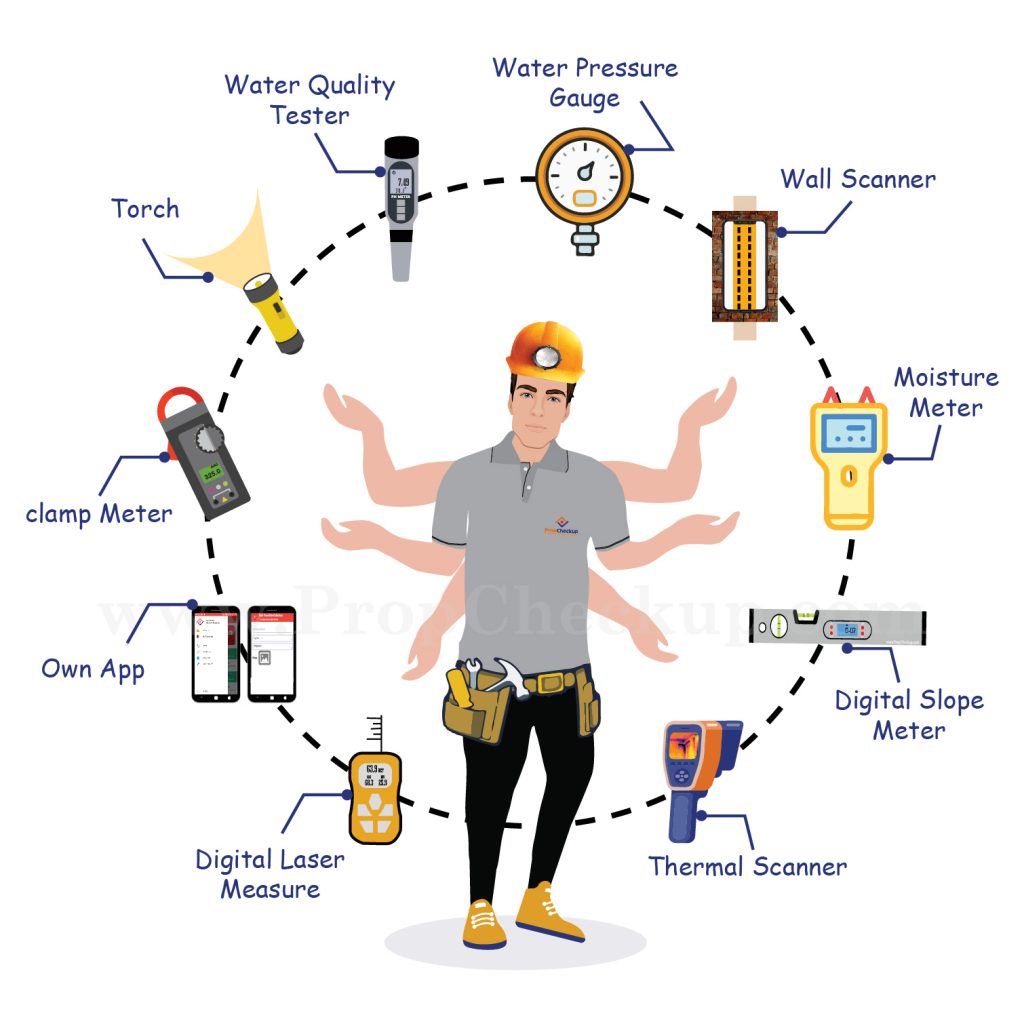

Challenges and Common Issues in the Inspection Process
Despite the importance and benefits of inspections, there are several challenges that organizations may face during the inspection process. Some common issues include:
Time Constraints
Inspections often need to be conducted within specific timeframes, especially in industries with tight schedules or deadlines. Limited time can lead to rushed inspection processes or inadequate assessments. Adequate planning and resource allocation can help address this challenge.
Limited Access and Restricted Areas
Some inspections may encounter limited access to certain areas or restrictions due to safety concerns or confidentiality. This can hinder the thoroughness of the inspection. Establishing clear communication channels and coordination with relevant stakeholders can help resolve this issue.
Complexity and Scope of Inspection
Certain inspections may involve complex systems, intricate processes, or large-scale facilities, making the inspection process challenging. Inspectors may require specialized knowledge or equipment to conduct a comprehensive assessment. Proper training, clear objectives, and collaboration with subject matter experts can help address this challenge.
Subjectivity and Bias
Due to the subjective nature of inspections, there is a possibility of bias or inconsistent evaluations. Inspectors’ personal opinions or preferences may influence the assessment. Implementing standardized procedures, ensuring qualified inspectors, and encouraging independent verification can mitigate this challenge.
Inadequate Resources and Budget
Limited financial resources or inadequate budget allocation can pose challenges to the inspection process. Insufficient funds may limit the availability of necessary tools, training, or personnel, impacting the quality or effectiveness of inspections. Proper budget planning, prioritization of resources, and effective resource management are key to overcoming this challenge.
Noncompliance with Regulations
Noncompliance with regulations or standards can be a significant challenge in inspection processes. Inspectors must stay updated with changing regulations and ensure that the inspections are conducted in accordance with the required guidelines. Regular training, rigorous documentation, and effective communication with regulatory bodies can address this challenge.
Conflict Resolution
Inspections, especially in collaborative environments or with multiple stakeholders, can lead to conflicts or disagreements. Differences in expectations, interpretations, or priorities may arise, requiring effective conflict resolution strategies. Open communication, active listening, and a collaborative approach can help navigate and resolve conflicts during the inspection process.
Technologies and Tools to Enhance the Inspection Process
Recent advancements in technology have revolutionized the inspection process, enabling organizations to conduct inspections more efficiently and accurately. Some technologies and tools that enhance the inspection process include:
Drones and Aerial Imaging
Drones equipped with cameras or sensors provide aerial views of target areas, making it easier to inspect large or inaccessible areas. Aerial imaging allows for detailed assessments, quicker inspections, and increased safety by reducing the need for physical access.
Remote Monitoring and Sensors
Remote monitoring systems and sensors provide real-time data on various parameters, such as temperature, humidity, pressure, or vibration. These technologies can be utilized in areas that require continuous monitoring, enabling proactive identification of issues or potential risks.
Digital Inspection Checklists
Digital inspection checklists replace traditional pen-and-paper methods, providing a more efficient and organized approach to inspections. Digital checklists can be accessed on mobile devices, making it easier to document findings, record observations, and generate automatic reports.
Real-Time Data Collection and Analysis
Utilizing mobile applications or handheld devices, inspectors can collect and record data instantaneously, enabling real-time analysis. Real-time data collection enhances accuracy, enables immediate action, and reduces the risk of data loss or errors.
Integrated Inspection Management Software
Inspection management software streamlines the entire inspection process, from planning to reporting. It allows for centralized management of inspection schedules, checklists, findings, and reports, ensuring consistency and efficiency throughout the inspection process.
Virtual Reality and Augmented Reality
Virtual reality (VR) and augmented reality (AR) technologies provide immersive and interactive experiences during inspections. Inspectors can visualize and manipulate digital models of assets or systems, enabling enhanced understanding, better assessments, and training simulations.
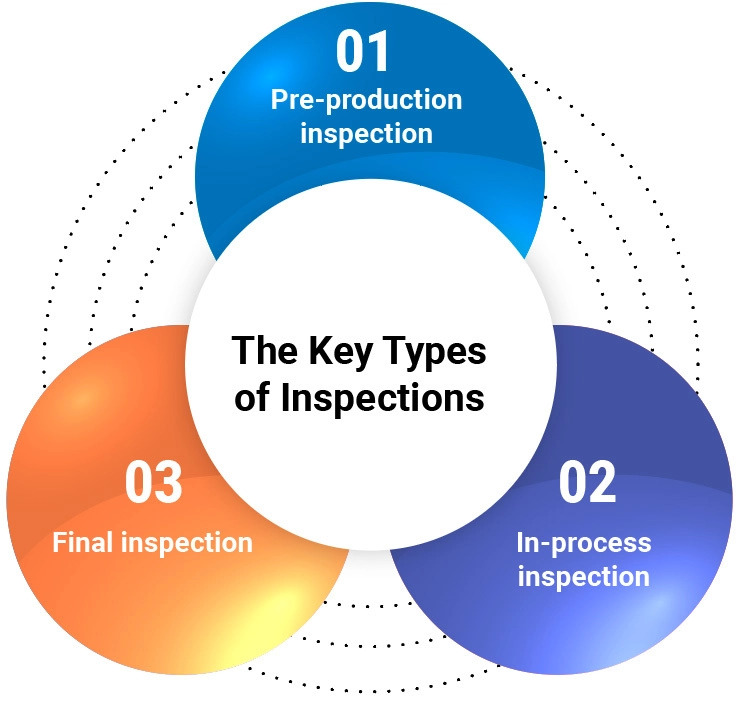

Best Practices for Conducting an Inspection
To ensure the effectiveness and efficiency of the inspection process, the following best practices should be followed:
Thorough Planning and Preparation
Proper planning is crucial for successful inspections. It involves clearly defining the scope, objectives, and requirements of the inspection, as well as allocating resources and setting realistic timelines. Thorough preparation ensures that inspectors are well-equipped and informed before conducting the inspection.
Clear Objectives and Criteria
Defining clear objectives and criteria helps guide the inspections and ensures consistency in evaluations. By clearly stating the desired outcomes and expectations, inspections become more focused and effective in achieving the desired results.
Systematic and Methodical Approach
Adopting a systematic and methodical approach improves the accuracy and reliability of inspections. This includes following standard operating procedures, performing inspections in a logical and organized manner, and utilizing checklists or digital tools to ensure consistency.
Attention to Detail
Paying attention to detail is essential in inspections. Inspectors should closely examine and evaluate each component or area, looking for any potential issues, anomalies, or deviations from the required standards. This meticulous approach helps in capturing even the smallest defects or hazards.
Effective Communication
Effective communication with all stakeholders involved in the inspection process is vital. Clear and timely communication helps ensure that everyone is on the same page, understands their roles and responsibilities, and fosters collaboration. It facilitates the exchange of critical information, feedback, and updates throughout the inspection.
Continuous Training and Skill Development
Regular training and skill development help inspectors stay updated with industry advancements, best practices, and relevant regulations. Continuous learning enhances the competence and professionalism of inspectors, ensuring a high standard of inspections and accurate evaluations.
Standardization and Consistency
Standardizing the inspection processes and procedures promotes consistency and reliability in inspections. Implementing standard operating procedures, checklists, or guidelines ensures that inspections are conducted in a uniform manner, minimizing variations or errors.
Regular Evaluation and Feedback
Regular evaluation and feedback help in assessing the effectiveness and quality of inspections. Evaluations may include reviewing inspection reports, performance metrics, or customer feedback. This feedback loop allows for continuous improvement and ensures that any issues or concerns are addressed promptly.
Adherence to Safety Procedures
Safety should be a top priority in inspections, especially when dealing with potentially hazardous environments or equipment. Inspectors should adhere to proper safety protocols, wear appropriate personal protective equipment, and follow established safety guidelines throughout the inspection process.
Collaboration and Teamwork
Collaboration and teamwork are essential in the inspection process, particularly in complex or large-scale inspections. Inspectors should work together, share information, and leverage each other’s expertise to enhance the quality and efficiency of inspections. Collaboration ensures a comprehensive evaluation and minimizes the risk of overlooking potential issues.
Legal and Ethical Considerations in the Inspection Process
The inspection process should adhere to various legal and ethical considerations. Some important factors to consider include:
Compliance with Laws and Regulations
Inspectors must ensure that the inspection process complies with applicable laws, regulations, or industry standards. This includes obtaining necessary permits, following health and safety protocols, and respecting privacy or confidentiality requirements.
Confidentiality and Data Protection
Inspectors may come across sensitive or confidential information during inspections. It is essential to maintain strict confidentiality, protect data privacy, and handle any confidential information with discretion. Unauthorized disclosure of information can lead to legal liabilities or reputational damage.
Impartiality and Fairness
Inspectors should remain impartial and objective throughout the inspection process. Personal biases, conflicts of interest, or favoritism should be avoided to ensure fair assessments and maintain the credibility of the inspection process.
Conflict of Interest
Inspectors should identify and address any potential conflicts of interest that may compromise their ability to conduct unbiased inspections. Transparency, disclosure, or recusal should be practiced when conflicts of interest exist, ensuring that inspections are conducted with integrity and professionalism.
Professional Code of Conduct
Inspectors should adhere to professional codes of conduct or ethical guidelines specific to their field. Professionalism, honesty, integrity, and respect for others are essential principles that should govern the behavior and actions of inspectors during the inspection process.
Environmental Responsibility
Inspectors should consider environmental impacts and sustainability throughout the inspection process. This includes adhering to environmental regulations, promoting energy efficiency, waste reduction, and identifying potential environmental risks or hazards during inspections.
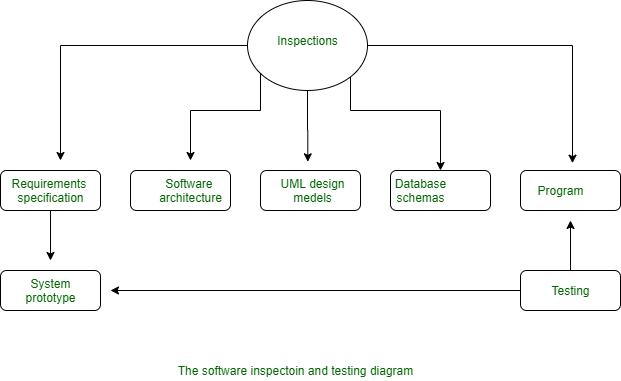

Importance of Professional Inspection Services
Professional inspection services offer several advantages compared to conducting inspections internally. Some key reasons to consider professional inspection services are:
Expertise and Specialized Knowledge
Professional inspection service providers possess extensive expertise, specialized knowledge, and experience in their respective fields. They are well-versed in industry regulations, standards, and best practices, enabling them to conduct thorough and accurate inspections.
Unbiased and Objective Assessments
Professional inspectors maintain neutrality, objectivity, and independence during inspections. Their impartiality ensures unbiased evaluations and provides stakeholders with confidence in the inspection results.
Risk Mitigation and Preventive Measures
Professional inspections help identify potential risks, hazards, or non-compliance issues at an early stage. Timely detection allows for prompt corrective actions, preventing accidents, costly damages, or legal liabilities.
Professionalism and Credibility
Hiring professional inspection services adds a level of professionalism and credibility to the inspection process. Professional inspectors adhere to ethical standards, follow established procedures, and provide comprehensive reports, contributing to the overall trust and confidence in the inspection results.
Efficiency and Time-Saving
Professional inspection services streamline the inspection process, saving organizations valuable time, effort, and resources. They come equipped with the necessary tools, knowledge, and experience, enabling efficient and effective inspections.
Cost-Effectiveness
While there may be costs associated with hiring professional inspection services, they often result in cost savings in the long run. Professional inspections help prevent costly damages, minimize downtime, and ensure compliance with regulations, which can result in significant cost savings over time.
Conclusion
The inspection process plays a pivotal role in ensuring quality, safety, compliance, and overall satisfaction. It involves systematically assessing various components, structures, or systems to identify any issues, risks, or non-compliance. By following a well-defined inspection process, organizations can prevent accidents, minimize downtime, and maintain the integrity of their assets, products, or services. By embracing new technologies, adhering to legal and ethical considerations, and continuously improving inspection practices, organizations can harness the full potential of inspections and enhance their overall operations. Whether it is a pre-purchase property inspection, safety inspection, quality control inspection, or routine maintenance inspection, a comprehensive and systematic approach ensures that inspections deliver valuable insights, promote safety, and drive overall excellence.

